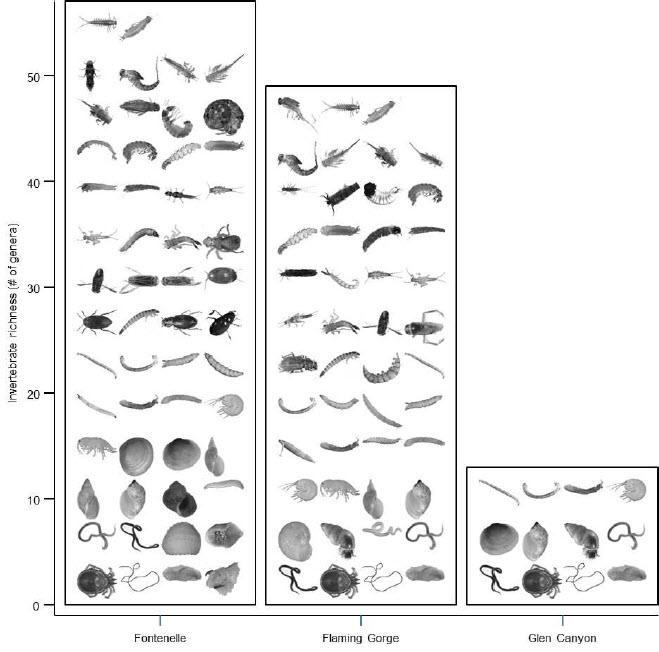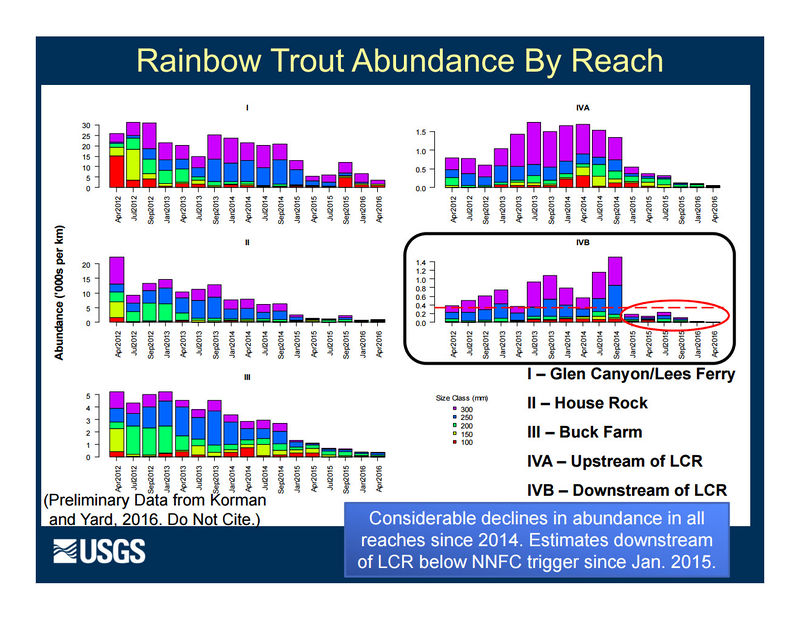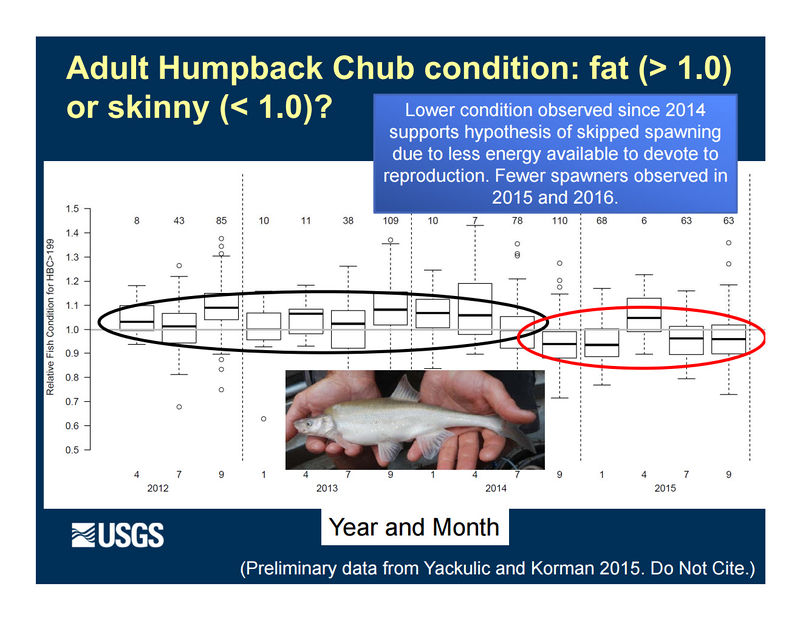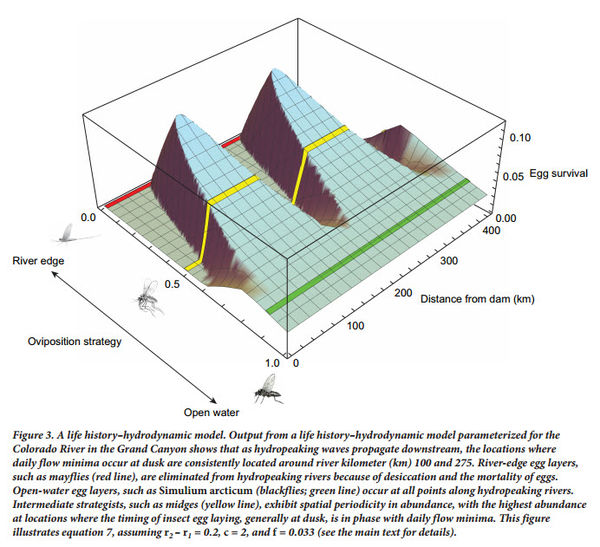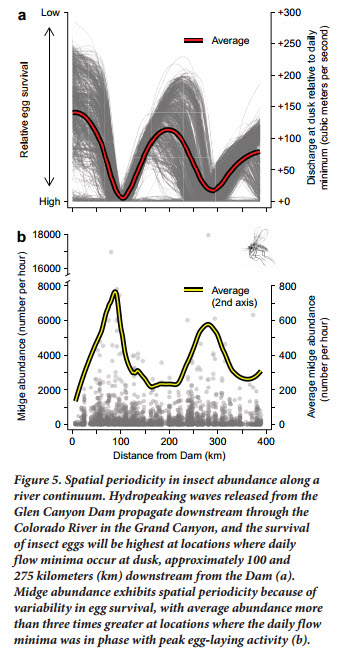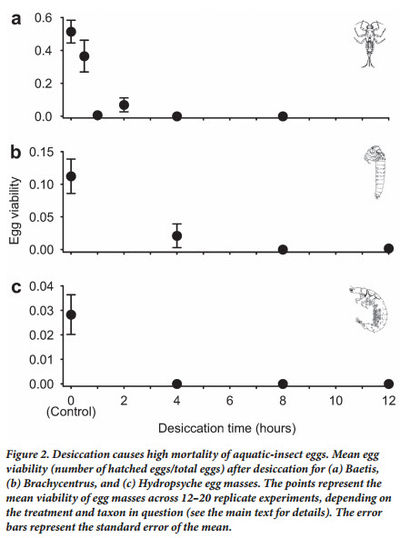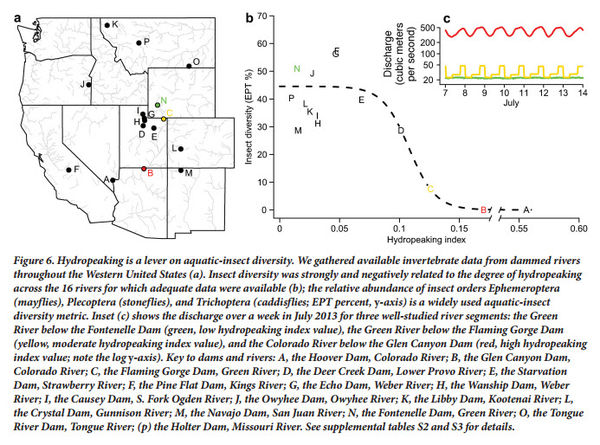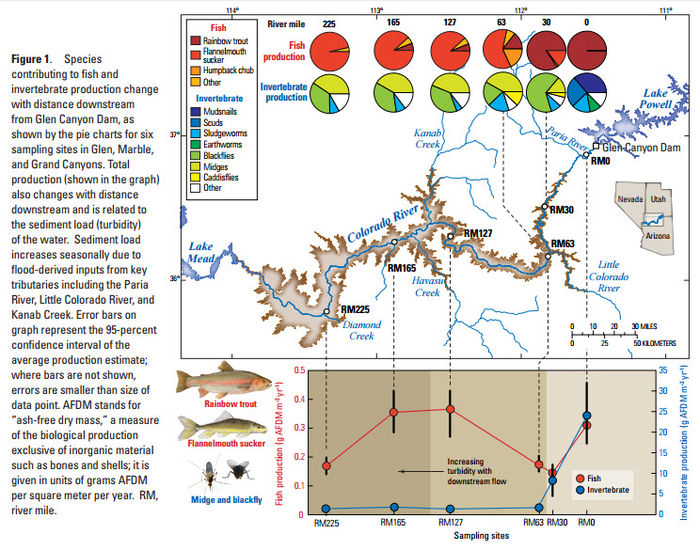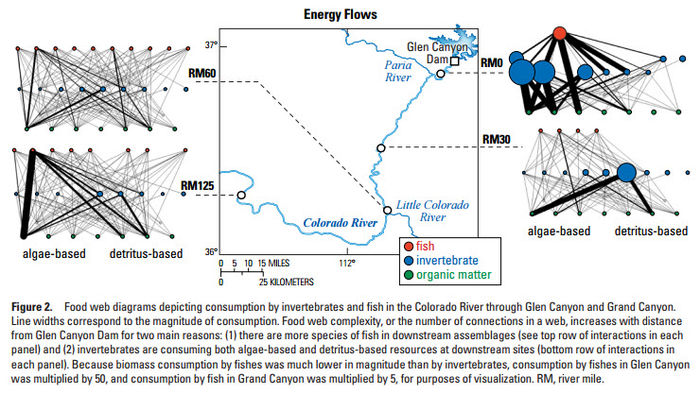Difference between revisions of "FOOD BASE"
Cellsworth (Talk | contribs) |
Cellsworth (Talk | contribs) |
||
| Line 102: | Line 102: | ||
'''2016''' | '''2016''' | ||
| + | *[http://www.usbr.gov/uc/rm/amp/amwg/mtgs/16aug24/Attach_07a.pdf Grand Canyon Monitoring and Research Center Science Updates (BO Compliance, Trout Updates, Green Sunfish, Fisheries PEP, Partners in Science)] | ||
*[http://pubs.usgs.gov/fs/2016/3053/fs20163053.pdf Voichick et al. 2016. Water clarity of the Colorado River—Implications for food webs and fish communities: U.S. Geological Survey Fact Sheet 2016–3053, 4 p.] | *[http://pubs.usgs.gov/fs/2016/3053/fs20163053.pdf Voichick et al. 2016. Water clarity of the Colorado River—Implications for food webs and fish communities: U.S. Geological Survey Fact Sheet 2016–3053, 4 p.] | ||
*[http://www.usbr.gov/uc/rm/amp/amwg/mtgs/16aug24/Attach_11b.pdf Aquatic Foodbase of the Little Colorado River] | *[http://www.usbr.gov/uc/rm/amp/amwg/mtgs/16aug24/Attach_11b.pdf Aquatic Foodbase of the Little Colorado River] | ||
Revision as of 19:11, 6 December 2016
|
|
The Aquatic Food Base below Glen Canyon DamThe Colorado River below Glen Canyon Dam has been altered by dam-induced modifications to the river’s flow, temperature, and sediment supply. Nonnative species have also changed the natural system. Nonnative fish are thought to prey on and compete with native fish, including the endangered humpback chub (Gila cypha). These impacts have likely changed both the amount and sources of energy that fuel the aquatic food web and the flows of energy within the food web. Installation of the dam created a relatively clear, cool aquatic environment below the dam that now allows aquatic plants to capture the sun’s energy, and they in turn are now consumed by a few species, including scuds (Gammarus lacustris), midges (Family: Chironomidae), blackflies (Simulium arcticum), and New Zealand mudsnails (Potamopyrgus antipodarum). The first three species can provide food for both native and nonnative fishes, but fish cannot digest the New Zealand mudsnail. Desired Future Condition for the Aquatic Food BaseThe aquatic food base will sustainably support viable populations of desired species at all trophic levels. Assure that an adequate, diverse, productive aquatic foodbase exists for fish and other aquatic and terrestrial species that depend on those food resources. |
| --- |
 |
--- |
|---|
|
|
